Last-Minute NYC Holiday Gift Guide 🎁
We’ve created a holiday gift guide with presents for the intrepid New Yorker that should arrive just in time—


Think street art and Dublin, the Irish capital, doesn’t spring to mind immediately, but the city has been undergoing somewhat of a transformation in recent years. No longer an underground activity, street art, graffiti, mural painting—call it what you will—has now become more than acceptable with businesses, arts organizations and Dublin City Council sponsoring and promoting artists.

The Camden Street area of the city is a haven for street artists of all styles and backgrounds and a new relationship is being built between artists and the rest of the community.


One such organization that occupies the space between the artist and business is Evolve Urban Art, founded to fill a gap in the cultural space in Dublin. One of their first commissions came about by chance, while printing images in a local camera shop called Gunn’s.
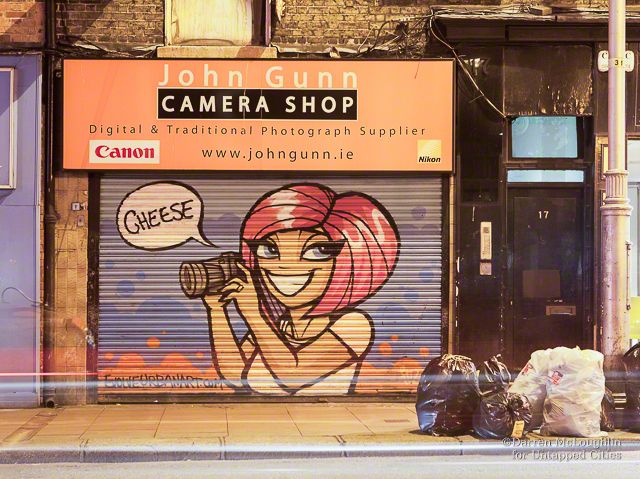
The owner asked if Evolve could find an artist to paint their shutters so that when the shop was closed the grim-looking steel shutters transformed into a piece of art would convey something about the business and provide a colorful addition to the streetscape.
One by one, other businesses, particularly around the Camden Street area, have become involved. In most cases, the artist and owner of the premises will connect directly with Evolve facilitating the process.
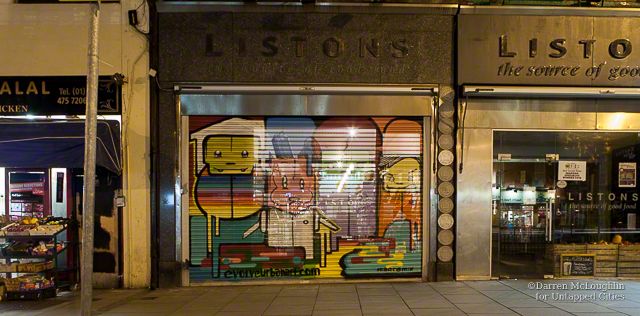
One of the larger projects they have been involved with is in the Thomas Street area of the inner city. During the Liberties Festival, they painted 15 pieces on some of the street’s many derelict buildings with the aim of working with youth groups, brightening up the area for the community and the many tourists that pass through on the way to and from the Guinness Storehouse, Dublin’s most popular tourist attraction.

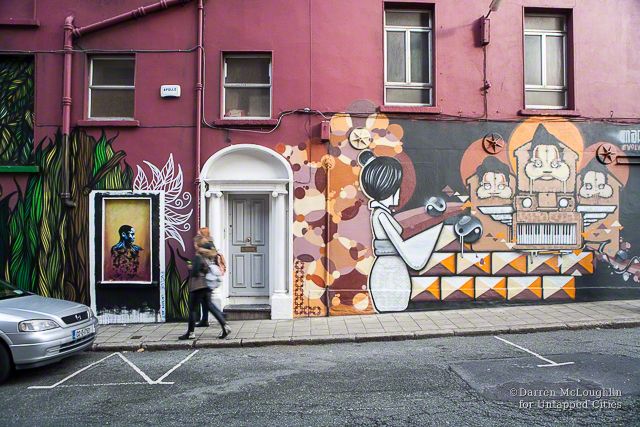
That project brought together artists from all over Ireland, which Ene Keenan, Evolve’s founder, is keen to do with events in the city. Evolve is organizing a series of events at the Bernard Shaw Pub, well known for promoting artists. It has a large open area to the rear with walls that are free to paint over. With a local art supply company providing the materials, it has an appeal to emerging artists as well as more established ones.
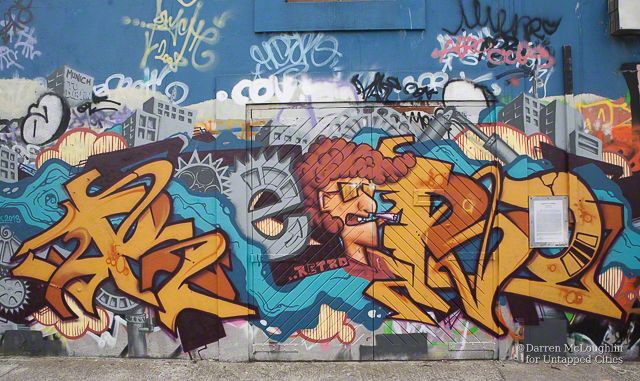

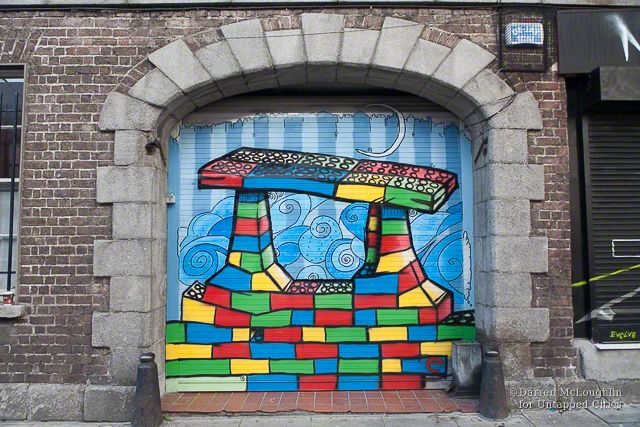
Meath Street and the rest of Dublin’s Liberties also provides several locations for artists, working on their own or through agencies.


One of the classic locations for graffiti in Dublin was Windmill Lane, the home of U2’s former studio. There was a free wall here that provided the possibility for anyone to express themselves. Over time the area painted grew until the entire street, buildings on surrounding streets, vehicles and parking meters were covered. Now, however, it is definitely illegal to paint in the area and prosecutions have resulted.

Close to Windmill Lane in the recently refurbished docklands area of Dublin, where the new U2 Tower was meant to be located, now shelved since the arrival of the current financial crisis, there are several derelict factory buildings and walls enclosing excavated building sites that provide some good wall space for artists in this part of the city.

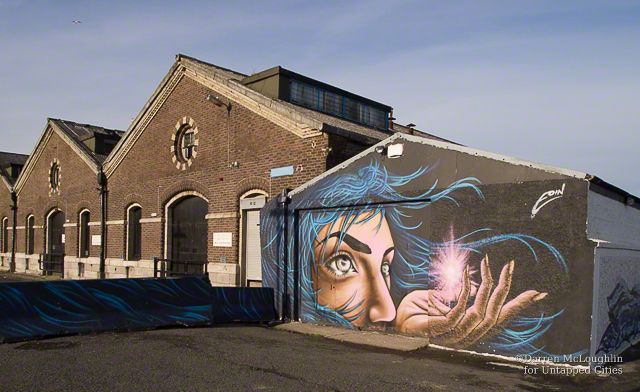
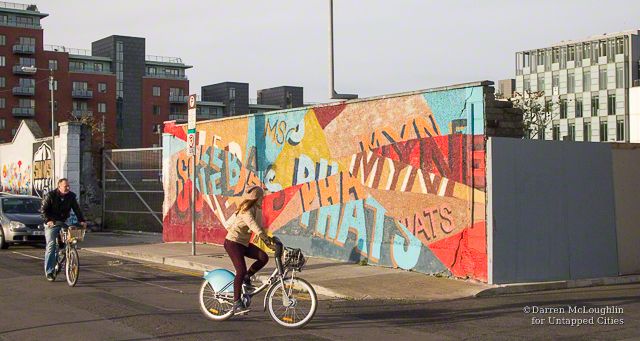
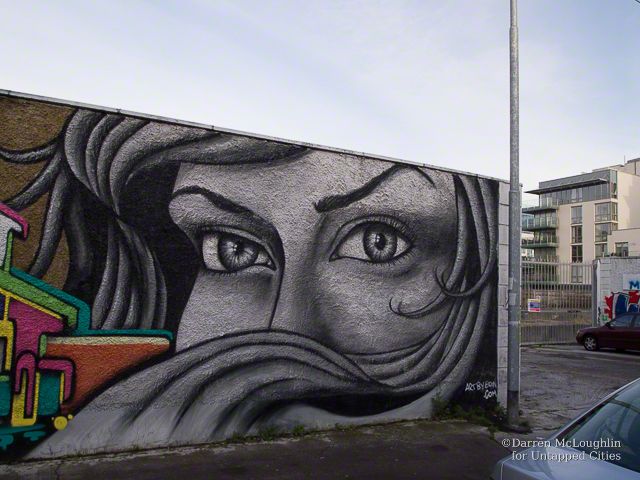
The Tivoli Theatre in Dublin’s inner city organizes an annual event to paint its large car park, with artists attending from all over the world. It was one of Ireland’s best known graffiti artists, James Earley, who organized this Graffiti Jam sponsored by All City Records in Dublin in 2012.
James Earley comes from a family of artists. His grandfather ran a stained glass workshop on Camden Street, supplying many of the country’s churches with artwork designs and stained glass windows. Earley has a degree in Graphic Design, his own graphic design business and a long history painting in Ireland and overseas working with UEFA, University College Dublin and public bodies.


It was another chance meeting, this time between Earley and a pub owner in Temple Bar, that has led to arguably the most ambitious street art project in Ireland.
During a commission to paint a supply station belonging to the ESB (the former state electricity supplier in Ireland) Earley was approached by a local pub owner. After some chatting, the landlord of the Oliver St. John Gogarty pub in Temple Bar asked Earley if he would paint the exterior walls of his nearby hotel.


After many discussions, Earley came up with the idea for a James Joyce’s Ulysses-themed project. The multi-story hotel is named Blooms Hotel after the central character Leopold Bloom. Currently well under way, many of the main characters are now finished and standing four stories high. With thousands of cans of paint, scaffolding and lifting equipment, the months of work will have created a most unique artwork in Dublin.
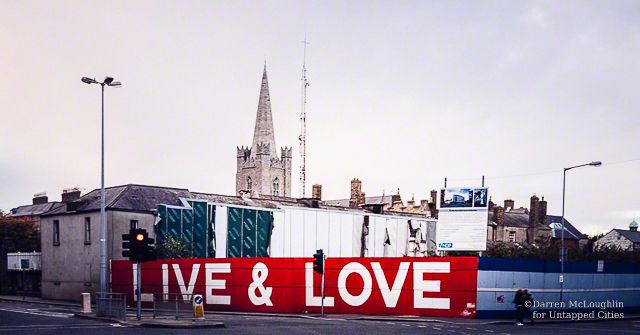
Ten years ago, Irish novelist Roddy Doyle said “It’s a big con job, we have sold the myth of Dublin as a sexy place incredibly well; because it’s a dreary little dump most of the time.”
With street art emerging more into the public sphere, that notion of Dublin as dreary has certainly changed and even Dublin City Council have started to make the city’s street furniture more appealing. Invitations for artists to design coverings for traffic signal control boxes have been particularly effective in improving the look of the city’s streets.
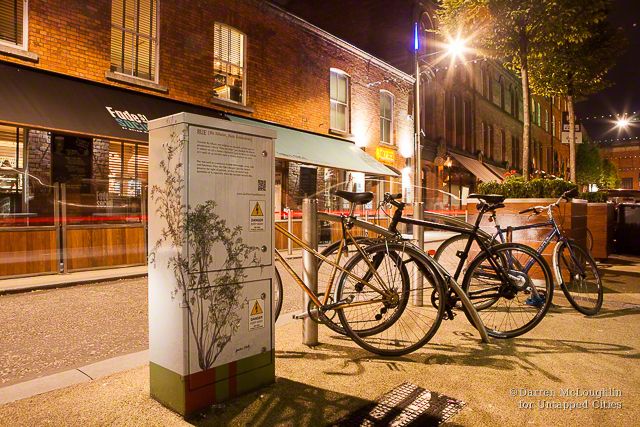
Subscribe to our newsletter